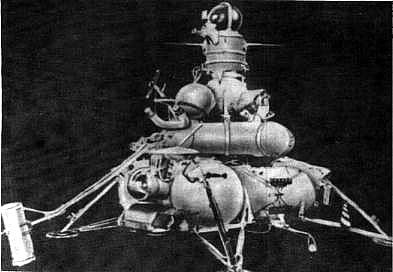NASA Lunar Orbiter Spots Old Soviet Moon Landers

NASA'ssharp-eyed Lunar Reconnaissance Orbiter (LRO) has been used to locate vintagespace hardware lobbed to the moon in the 1970s by the former Soviet Union.
LROhas been a "boon for the moon," said Mark Robinson of Arizona State Universityin Tempe, Ariz., the principal investigator for the high-powered LunarReconnaissance Orbiter Camera, or LROC for short.
Ina set of just-released LROC images, the former Soviet Union's Luna 20 and Luna24 have been sighted. TheSoviet Union successfully executed three robotic sample return missions as partof the ColdWar competition with the United States, Robinson said.
SomeSoviet lunar rovers, called Lunokhods, were also spotted by the eagle cameraeyes of LRO.
Soviet-stylemoon probes
Thefirst mission, Luna 16, returned to Earth a small sample of 0.22 pounds (101grams) from the moon's Mare Fecunditatis in September of 1970, a period of timebetween NASA's Apollo 12 and Apollo 14 human landings.
In February 1972, Luna 20 returned a smallersample — 55 grams — of soil from the Apollonius highlands region.
Get the Space.com Newsletter
Breaking space news, the latest updates on rocket launches, skywatching events and more!
Luna 16 and 20 were very similar in designand sampling method, Robinson said. A drill at the end of the sampling armcollected soil from a few tens of centimeters below the surface. The arm thenplaced the sample into the return capsule on top of the vehicle that wasrocketed off themoon for a parachute landing on Earth.
The Luna 20 sample contained minerals similarto those sampled by the Apollo 16 astronauts two months later from the moon'sCayley plains.
In one LROC image, the distinctive shadow atthe Luna 20 site is most likely that of the outstretched robotic sampling arm.
Try and try again
In October of 1974 Luna 23 set down on MareCrisium, however technical difficulties prevented it from successfullyacquiring a sample and launching lunar specimens back to Earth.
In try and try again mode, the Soviets weresuccessful in landing Luna 24 on the moon in August of 1976.
Luna 24 was designed to penetrate over 6 feet(2 meters) into the lunar soil. It collected a better section and a largersample — some 170 grams — that was launched back to Earth.
The relative positions of the Luna 23 and Luna24 landers were not well known, Robinson said. But from LRO's narrow anglecamera images the distance between the two spacecraft appears to be roughly8,000 feet (2,400 meters).
In the Luna 24 imagery, a viewer can observea few very bright pixels near the lander, perhaps small pieces of materialblown off the descent stage as the ascent stage blasted off towards Earth, Robinsonsaid.
Lunokhods rovers found
In another release of LROC imagery, theSoviet Union's Lunokhod 1 and Lunokhod 2 moon rovershave been found.
Each of the 8-wheeled lunar buggies wasdelivered by a lander. After their respective touch downs — in November 1970and in January 1973 — the rovers rolled down ramps onto the moon's terrain.
The rovers were driven by solar power duringthe day; at night they would park and rely on thermal energy from a polonium-210radioisotope heater to survive the lunar cold.
One of the happiest on Earth to hear of finding the Lunokhods wasprivate space traveler, Richard Garriott, who flew a self-financed trek to theInternational Space Station in 2008.
Turns out that entrepreneur Garriott had bought both the Luna 21lander and the Lunokhod 2 rover from Russia's Lovochkin Association for $68,500in 1993, during a Sotheby's space auction in New York.
- Top 10 Soviet and Russian Space Missions
- Image Gallery — Full Moon Fever
- New Photos Reveal Apollo 11 at First Moon Landing Site
Join our Space Forums to keep talking space on the latest missions, night sky and more! And if you have a news tip, correction or comment, let us know at: community@space.com.

Leonard David is an award-winning space journalist who has been reporting on space activities for more than 50 years. Currently writing as Space.com's Space Insider Columnist among his other projects, Leonard has authored numerous books on space exploration, Mars missions and more, with his latest being "Moon Rush: The New Space Race" published in 2019 by National Geographic. He also wrote "Mars: Our Future on the Red Planet" released in 2016 by National Geographic. Leonard has served as a correspondent for SpaceNews, Scientific American and Aerospace America for the AIAA. He has received many awards, including the first Ordway Award for Sustained Excellence in Spaceflight History in 2015 at the AAS Wernher von Braun Memorial Symposium. You can find out Leonard's latest project at his website and on Twitter.









